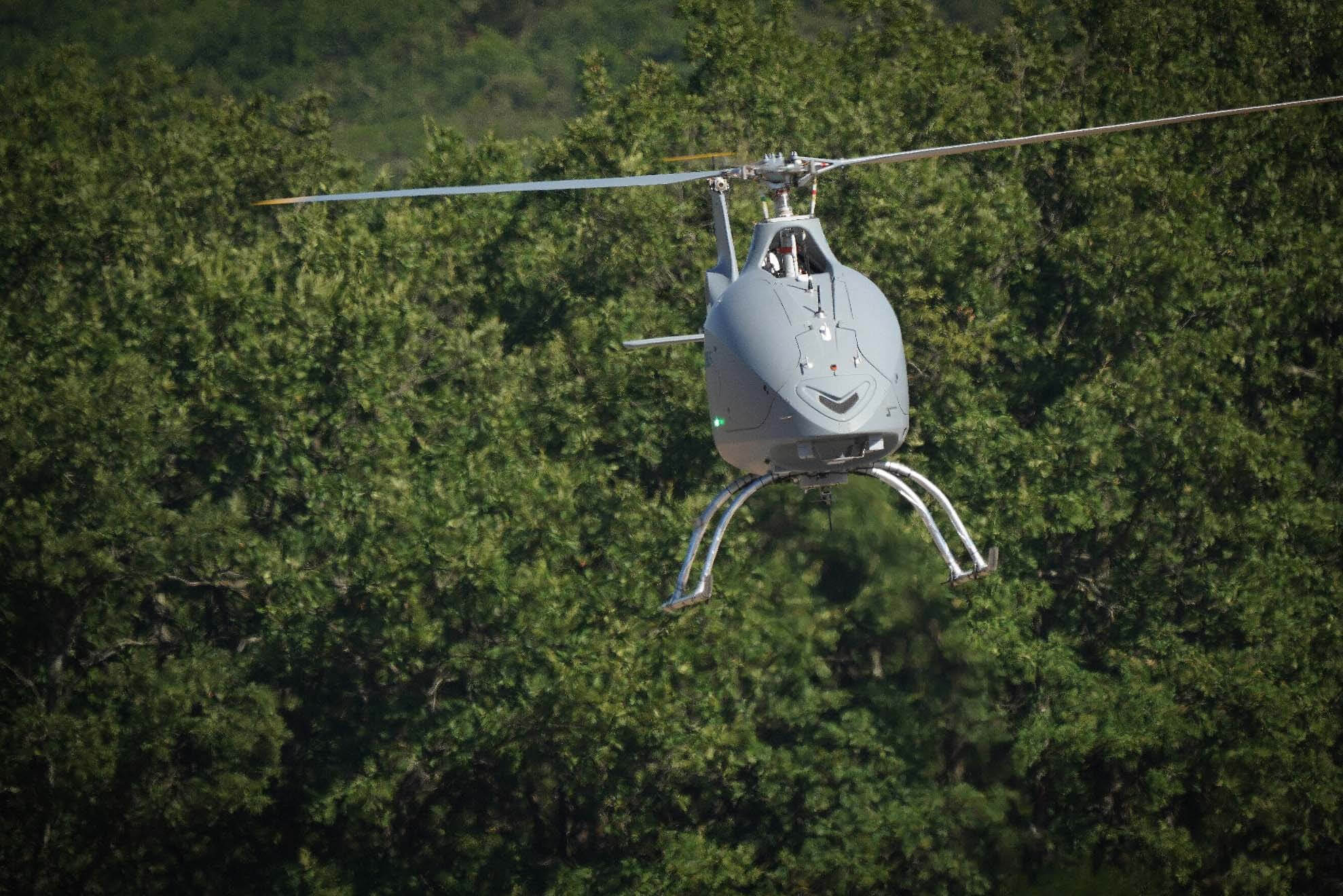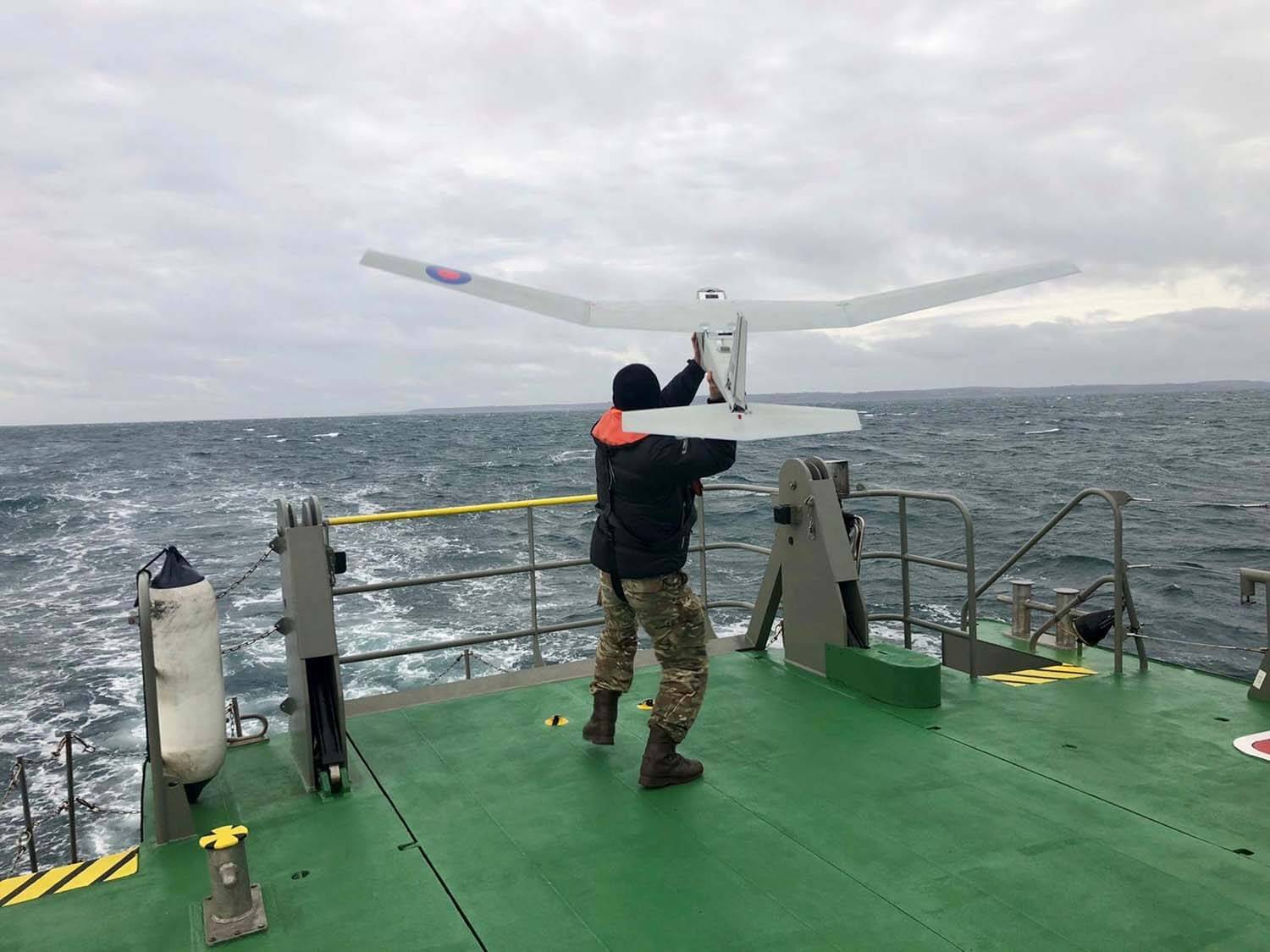There has been a resurgence of interest in unmanned aerial submarine-hunting capabilities as potential underwater threats, especially from Russia and China, continue to grow.
The United States Navy operated the first operational shipborne unmanned vertical take-off and landing (VTOL) aircraft, the Gyrodyne QH-50 Drone Anti-Submarine Helicopter (DASH). More than 500 were delivered to the US Navy and were used in action in the Gulf of Tonkin during the Vietnam War in 1966, and 16 were delivered to the Japanese Maritime Self-Defence Force.
It would be another 40 years before the US Navy took delivery of another VTOL UAV, Northrop Grumman’s RQ-8A Fire Scout based on the Schweizer 333 light helicopter. However after a protracted development only small numbers of the later RQ-8Bs were operational and several were lost in accidents including one on 14 August 2020 at Naval Base Ventura County, at Point Mugu and another on 27 April 2021 when it crashed on landing on the USS Charleston in the Pacific. The US Navy switched its focus to the larger Northrop Grumman MQ-8C Fire Scout based on the Bell 407 helicopter which made it first unmanned flight in December 2010. The US Navy has a requirement for 38 MQ-3Cs but it was not until July 2019 that it was declared mission capable although its exact role is still under review.

Martin UAV’s V-Bat long-endurance VTOL UAV has been down selected for the USN’s Mi2 Challenge to prototype new UAS capabilities to address the technological requirements of harsh operating environments. Martin UAV was one of 13 respondents to the Mi2 Challenge and was down selected in April 2021 with L3Harris Technologies to compete in a technology demonstration at the Yuma Proving Grounds in Arizona.
At the other end of the scale, the MQ-4C Triton high-altitude, long endurance (HALE) UAV is a maritime version of the Northrop Grumman Global Hawk that has been in US Navy service since 2018.
In August of that year Boeing Defense, Space & Security won the US Navy’s Carrier-Based Aerial-Refuelling Systems competition with its MQ-25 Stingray UAV. In partnership with the US Navy, Boeing’s MQ-25 T1 flew for more than six hours on a recent test flight, as well as its highest flight to date, to an altitude of 30.000ft (9,100m). In early June the T1 completed the aerial refuelling of an F/A-18 Super Hornet. Under the contract, worth an initial $805.3 million, Boeing will deliver four fully operational MQ-25As by 2024.
In Europe, France is leading proponent of Maritime UAS (MUAS) operations. Naval Group, on behalf of the French Navy accepted four additional Schiebel Camcopter S-100 VTOL UAVs in December 2020 to be deployed on the Mistral-class amphibious helicopter carriers Tonnerre and Mistral. The acquisition came after the successful integration of a Camcopter S-100 on the French Navy Mistral-class Dixmude in 2019 which was the first time in Europe, that a VTOL UAS had been immersed with the combat system of an amphibious helicopter carrier.

In February 2021 Airbus Defence and Space mini-UAS subsidiary Survey Copter signed a contract with French DGA to provide the French Navy with 11 systems each with two air vehicles, of the electrically powered fixed-wing Aliaca MUAS, including training and integrated logistic support with first deliveries expected during this year.
The French Minister of Armed Forces, Florence Parly, announced in April 2021 that the Armament General Directorate (DGA) has signed an order to purchase a second prototype of the Airbus VSR700 is an VTOL MUAS being developed from the Guimbal Cabri light helicopter for the French Navy in partnership with the Naval Group.
The United Kingdom has been on the back foot of MUAS development for the Royal Navy although 700X Naval Air Squadron trains military operators to use Remotely Piloted Air Systems (RPAS) on the frontline and has overseen trials of the Puma AE 2 from the new RN OPV, HMS Tamar in 2020. In January 2021 an Request for Information (RfI) was published for the Royal Navy to study the market for a heavy transport MUAS. The UAV will have to be capable of carrying a 200kg (440lb) payload and be able to conduct BLOS flights. It will have to be resistant to the maritime environment, and have an open architecture so it can be easily modified.

The RN’s Future Maritime Aviation Force vision for 2030 includes Project Vixen, a plan for a medium-sized fixed-wing Loyal Wingman UAV to work with Lockheed Martin F-35s with the potential to be used in a wide range of roles, including combat air patrols (CAP), reconnaissance (ISTAR), electronic warfare (EW) and acting as a communications relay. It could also be adapted as an air-air refuelling (AAR) tanker to extend the combat radius of the F-35. It is likely that the RAF’s Lightweight Affordable Novel Combat Aircraft (LANCA) being developed by Team Mosquito could be carrier capable.
Another European MUAS programme of note is Poland’s Albatros project to provide a tactical short-range maritime VTOL UAV for the Polish Navy. The order concerns delivery of two short-range tactical VTOL UASs, including one system procured as a part of the base procurement, and one that may be procured within the scope of the right of option. The UAVs will be used to equip the Polish armed forces with equipment for daytime/night observation in varied environments, including reconnaissance over the sea, coast, the land, and in maritime SAR missions with the use of E/O sensors and SAR radar sensors.

In December 2020 the Polish Armament Inspectorate, announced six bidders participating in programme: UMS Skeldar, WB Electronics, PZL-Świdnik with Leonardo, Schiebel, WORKS 11 with Martin UAV, and Siltec. The bids had to be submitted by 29 January 2021 with the delivery of a system within 15 months.
One of the bidders, UMS Skeldar announced that its Skeldar V-200 VTOL MUAS successfully accomplished the first automatic take-off and landing (ATOL) of a tactical UAV from a ship in February 2021, and is considered a front rummer for the Albatros programme along with the most successful MUAS, Schiebel’s Camcopter S-100.
by David Oliver













